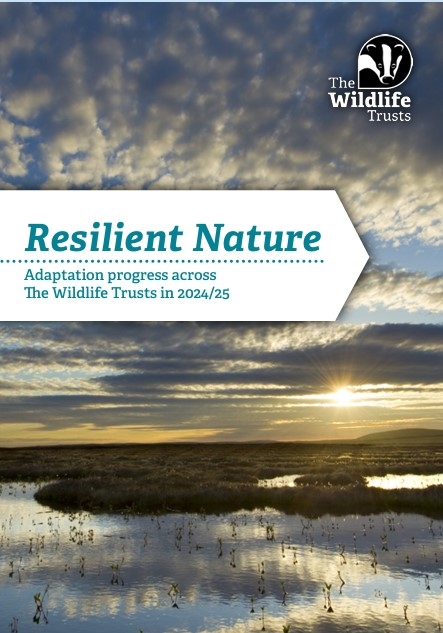Today, The Wildlife Trusts publish their new assessment of the effects of climate change on nature across the UK. The report, Resilient Nature, shows how much-loved species and habitats are faring across The Wildlife Trusts’ 2,600 nature reserves in response to the changing climate and extreme weather over the past year.
Whilst summer’s headlines were dominated by heatwaves and drought, the report reveals that over the past 12 months it has been extreme changes in weather patterns that have been the most damaging overall, with the natural world bearing much of the brunt.
Key findings include:
- Drought and heat extremes have caused important wildlife habitats, such as peat bogs, wetlands, and heathlands, to dry out on Staffordshire Wildlife Trust nature reserves. Low water levels in ponds, streams and rivers have also affected swifts, dragonflies and amphibians.
- High wildfire risk has imperilled precious landscapes, including at Gentleshaw Common Nature Reserve which suffered from arson this April.
- Unpredictable weather has led to disruptive storm events, with natural habitats unable to absorb sudden, vast amounts of rainfall. Local nature reserves and communities in Stafford, Eccleshall, and across the county suffered from flooding in early September.
Jeff Sim, Head of Reserves and Species Recovery, Staffordshire Wildlife Trust says:
“Wildlife here has struggled to scratch out an existence in the dried-up sections of wetlands and floodplains. According to the Met Office, spring 2025 was the warmest on record since 1910, with real impacts on birdlife and bat species that rely on the invertebrates usually found in wet habitats for food. As we head into autumn, we also have concerns for fish such as trout, who need the right depth of water to migrate. This is likely to have a knock-on effect on kingfishers too, who feed on fish found in the river.”
David Cadman, Head of Nature Recovery Networks, Staffordshire Wildlife Trust says: “I’m more concerned than ever that our sensitive river systems, which have been placed under unprecedented pressure thanks to human activity, are now being pushed to the brink. Warmer, unreplenished rivers such as the Trent quickly suffer from oxygen depletion, negatively impacting invertebrates and fish including minnows, brown trout and pike. Increased pollution and algal blooms also reduce oxygen levels, which could mean kingfishers struggle to breed successfully, while the restoration of water vole and otter populations will also be doubly challenging in these conditions.”
The latest UK State of Climate report (2) made clear that this weather chaos – with more frequent record temperatures, drought, fire and flooding – is now the norm. Staffordshire Wildlife Trust is hard at work safeguarding the natural world from the worst of climate extremes. Examples include:
- Work to reconnect the River Trent with its floodplain at Shugborough Estate is helping to protect local communities as well as supporting wading birds, juvenile fish, dragonflies and damselflies.
- Restoration of upland peatbogs on The Roaches Nature Reserve is slowing and storing water, capturing carbon and supporting wildlife such as curlew.
- 64 acres of restored wetland at Rugeley Riverside Park is underway to provide community access to nature and habitat for dragonflies, flowering rush, little egrets, other wading birds and otters.
Kathryn Brown OBE, director of climate change and evidence at The Wildlife Trusts, says: “Our new report reveals that climate change is accelerating at a frightening pace, with worrying impacts on wildlife and nature reserves – as well as on human health and our future resilience as an economy. Yet while Wildlife Trust staff and volunteers across the UK race to adapt the way that we care for our land, Government action to address climate change is fast falling behind.
“The events in southern Europe – where wildfires and floods have imperilled both people and wildlife – should sound the alarm loudly: we are shockingly underprepared for such extremes here in the UK. The UK Government must rapidly undertake a major overhaul of adaptation policy, with increased funding and coordination, in order to tackle this accelerating threat head on.”
You can read Resilient Nature here.

